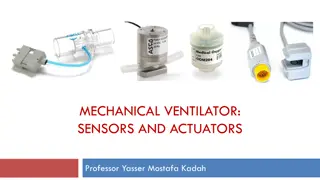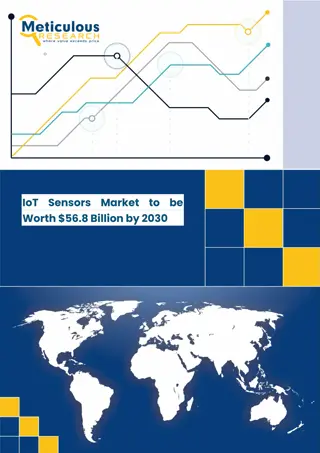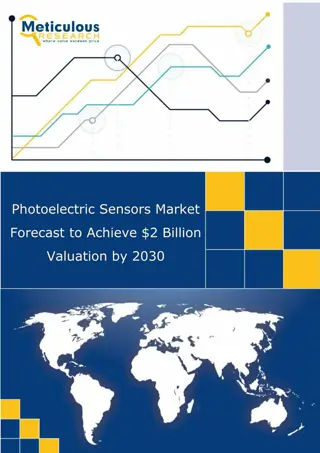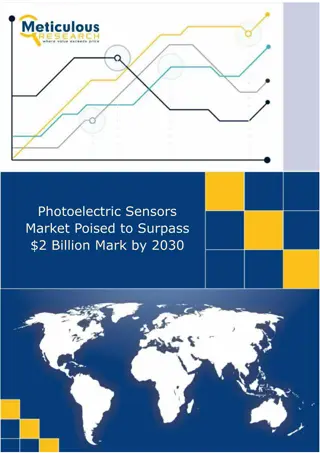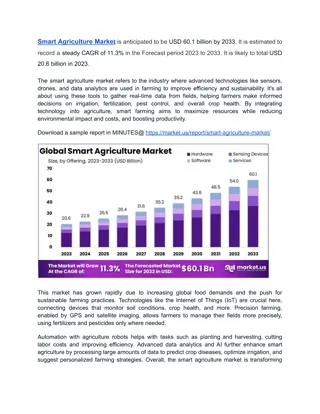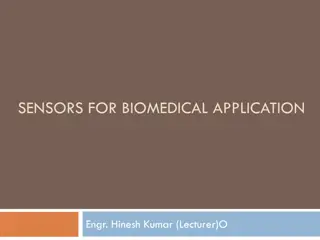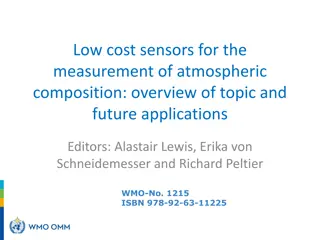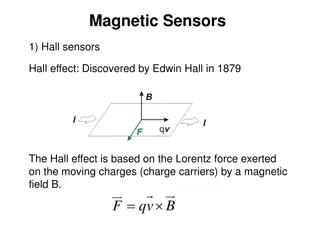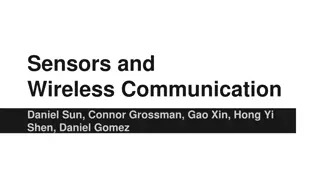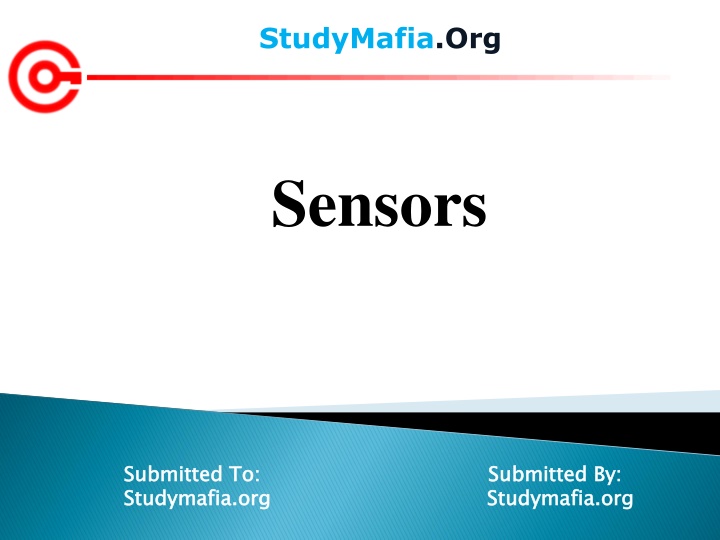
Understanding Sensor Classification and Types
Discover the definition, introduction, and classification of sensors in this detailed guide. Explore the various types of sensors and their functionalities, from active to passive sensors, analog to digital sensors, and more.
Download Presentation

Please find below an Image/Link to download the presentation.
The content on the website is provided AS IS for your information and personal use only. It may not be sold, licensed, or shared on other websites without obtaining consent from the author. If you encounter any issues during the download, it is possible that the publisher has removed the file from their server.
You are allowed to download the files provided on this website for personal or commercial use, subject to the condition that they are used lawfully. All files are the property of their respective owners.
The content on the website is provided AS IS for your information and personal use only. It may not be sold, licensed, or shared on other websites without obtaining consent from the author.
E N D
Presentation Transcript
StudyMafia.Org Sensors Submitted Studymafia.org Studymafia.org Submitted To: To: Submitted Submitted By: By: Studymafia.org Studymafia.org
Table Contents Definition Introduction Classification of Sensors Types of Sensors Conclusion 2
Definition It is a device that converts signals from one energy domain to electrical domain. 3
Introduction There are numerous definitions as to what a sensor is but I would like to define a Sensor as an input device which provides an output (signal) with respect to a specific physical quantity (input). The term input device in the definition of a Sensor means that it is part of a bigger system which provides input to a main control system (like a Processor or a Microcontroller). 4
Classification of Sensors There are several classifications of sensors made by different authors and experts. Some are very simple and some are very complex. The following classification of sensors may already be used by an expert in the subject but this is a very simple classification of sensors. 6
Classification of Sensors In the first classification of the sensors, they are divided in to Active and Passive. Active Sensors are those which require an external excitation signal or a power signal. Passive Sensors, on the other hand, do not require any external power signal and directly generates output response. 7
Classification of Sensors The next classification is based on conversion phenomenon i.e., the input and the output. Some of the common conversion phenomena are Photoelectric, Thermoelectric, Electrochemical, Electromagnetic, Thermooptic, etc. 8
Classification of Sensors Analog Sensors produce an analog output i.e., a continuous output signal (usually voltage but sometimes other quantities like Resistance etc.) with respect to the quantity being measured. Digital Sensors, in contrast to Analog Sensors, work with discrete or digital data. The data in digital sensors, which is used for conversion and transmission, is digital in nature. 9
Types of Sensors Temperature Sensor One of the most common and most popular sensors is the Temperature Sensor. A Temperature Sensor, as the name suggests, senses the temperature i.e., it measures the changes in the temperature. 10
Types of Sensors Proximity Sensors A Proximity Sensor is a non-contact type sensor that detects the presence of an object. Proximity Sensors can be implemented using different techniques like Optical (like Infrared or Laser), Sound (Ultrasonic), Magnetic (Hall Effect), Capacitive, etc. 11
Types of Sensors Infrared Sensor (IR Sensor) IR Sensors or Infrared Sensor are light based sensor that are used in various applications like Proximity and Object Detection. IR Sensors are used as proximity sensors in almost all mobile phones. 12
Types of Sensors Light Sensor Sometimes also known as Photo Sensors, Light Sensors are one of the important sensors. A simple Light Sensor available today is the Light Dependent Resistor or LDR. The property of LDR is that its resistance is inversely proportional to the intensity of the ambient light i.e., when the intensity of light increases, its resistance decreases and vise-versa. 13
Types of Sensors Smoke and Gas Sensors One of the very useful sensors in safety related applications are Smoke and Gas Sensors. Almost all offices and industries are equipped with several smoke detectors, which detect any smoke (due to fire) and sound an alarm. 14
Types of Sensors Alcohol Sensor As the name suggests, an Alcohol Sensor detects alcohol. Usually, alcohol sensors are used in breathalyzer devices, which determine whether a person is drunk or not. Law enforcement personnel uses breathalyzers to catch drunk-and-drive culprits. 15
Types of Sensors Touch Sensor We do not give much importance to touch sensors but they became an integral part of our life. Whether you know or not, all touch screen devices (Mobile Phones, Tablets, Laptops, etc.) have touch sensors in them 16
Types of Sensors Color Sensor A Color Sensor is an useful device in building color sensing applications in the field of image processing, color identification, industrial object tracking etc. The TCS3200 is a simple Color Sensor, which can detect any color and output a square wave proportional to the wavelength of the detected color. 17
Types of Sensors Humidity Sensor If you see Weather Monitoring Systems, they often provide temperature as well as humidity data. So, measuring humidity is an important task in many applications and Humidity Sensors help us in achieving this. 18
Types of Sensors Tilt Sensor Often used to detect inclination or orientation, Tilt Sensors are one of the simplest and inexpensive sensors out there. Previously, tilt sensors are made up of Mercury (and hence they are sometimes called as Mercury Switches) but most modern tilt sensors contain a roller ball. 19
Conclusion Sensors are central to industrial applications being used for process control, monitoring, and safety. Sensors are also central to medicine being used for diagnostics, monitoring, critical care, and public health. 20


